Here in Naxos, and across much of Greece, there is a phenomenon both mesmerizing and maddening: dusty drizzle or mud rain—a surreal union of sky and sand, wind and water, Africa and the Aegean.
You’ve seen it.
A veil of haze covers the sky, the sun grows faint behind a sepia filter, and the air takes on a strange thickness—like a secret is floating in it. It’s not fog. It’s not mist. It’s dust. Sahara dust.
The dusty drizzle or mud rain phenomenon, caused by Saharan dust, is not unique to Greece, though it’s very common and particularly noticeable there due to the country’s geography, wind patterns, and island landscapes. This dust-laden rain affects many Mediterranean countries, especially those closest to North Africa or lying along the path of southern and southeastern winds.
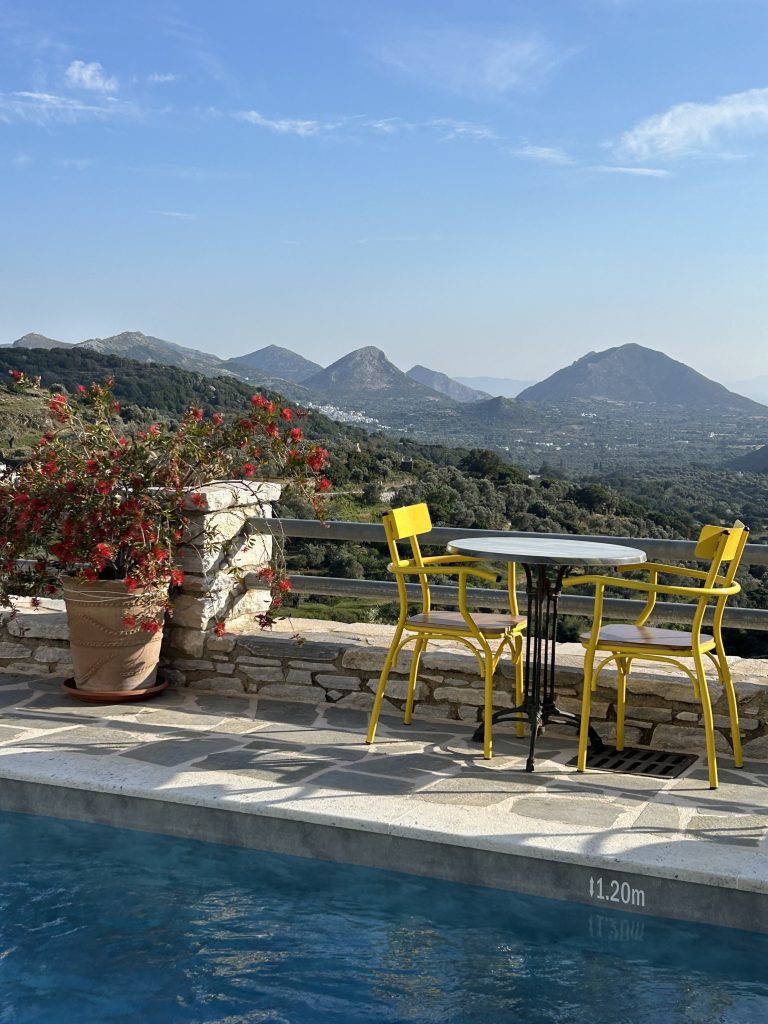
Countries commonly affected include:
- Greece – Especially the islands and southern mainland. The Cyclades, Crete, and the Peloponnese often experience vivid red rain and dusty skies.
- Italy – Particularly the south (Sicily, Calabria) and Sardinia. Italian skies can turn orange or yellow during these events.
- Spain – Especially southern Spain and the Canary Islands, but also inland areas like Madrid at times.
- France – The southern regions like Provence and Corsica are occasionally affected, though less frequently than Greece or Spain.
- Cyprus – Experiences similar dust events regularly, especially in spring.
- Turkey – Especially the western and southern coasts near the Aegean and Mediterranean.
- Malta – As a small island south of Sicily, it often receives Sahara dust.
- Portugal (Madeira) – Occasionally, when strong southerlies push the dust further west.
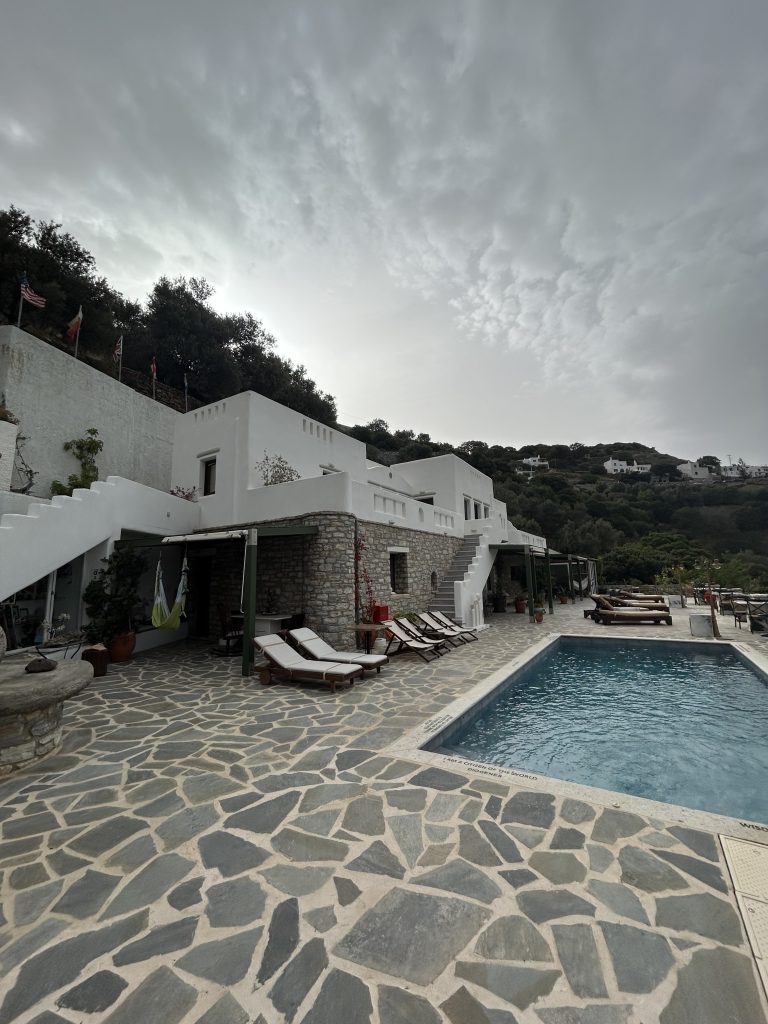
A Cloudy Illusion
At first glance, it seems like overcast weather is rolling in. But look closer. The sky is not grey, but yellowish, rusty, and soft-edged. What you’re really seeing is an atmospheric migration—fine particles of dust lifted from the vast Sahara desert, swept across the Mediterranean by southern winds.
This happens several times a year. In some seasons, it’s more frequent, especially when the air is still and the humidity high. The dust lingers, clings to leaves, drapes across balconies, settles silently on everything.
Then it rains.
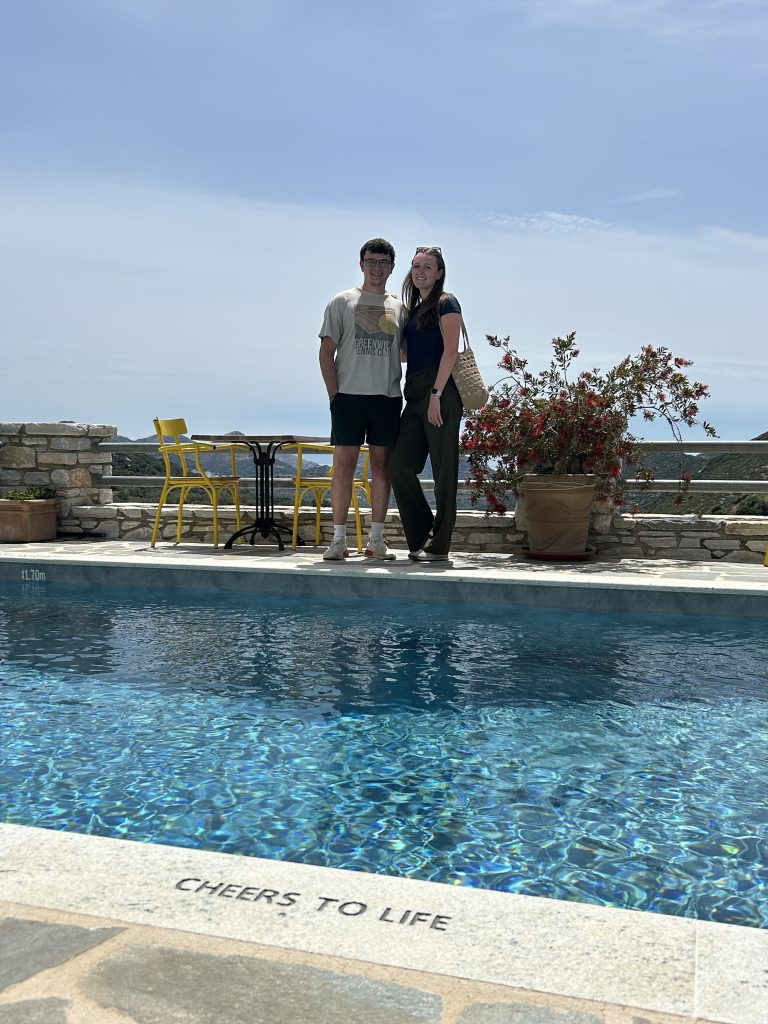
The Sky Weeps Earth
It doesn’t matter if it’s a gentle drizzle or a sudden downpour—when the rain finally comes, it doesn’t fall clean. It falls like clay, smearing windows, streaking white walls, and coating everything in reddish-brown mud. Cars become abstract art. Terraces look like pottery workshops. Olive trees wear a robe of dust.
In Greek, people call it “λασποβροχή” or “λασποσταγονίτσες”— mud rain or mud drizzle. It’s both natural and inconvenient. Beauty and nuisance in one breath.
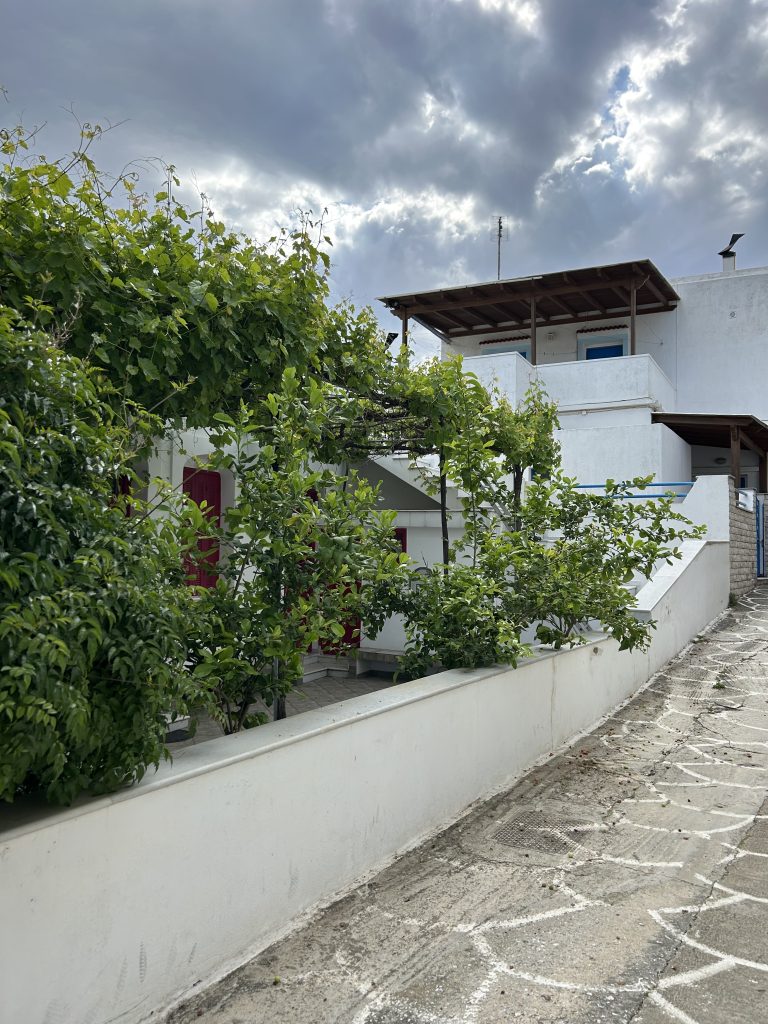
Scientific Angle: More Than Mud – A Global Journey
What many don’t realize is that Saharan dust isn’t just dirt—it’s part of a much larger story. Rich in minerals like iron and phosphorus, and even microscopic organic matter, this dust travels thousands of kilometers, nourishing life along the way. It fertilizes the Amazon rainforest, enriches the Atlantic Ocean, and here in Greece, it subtly feeds the land.
Scientists study it closely—tracking its composition, path, and environmental impact in labs across the Mediterranean. It plays a role in climate patterns, ocean health, and even soil fertility.
But while it’s a subject of global research, for those of us who live beneath these ochre skies, it’s also deeply personal. The air may shimmer with mystery, but it can also bring discomfort—especially for those with allergies or asthma.
So yes, the sky may look poetic…
But it helps to know what you’re breathing.

Why It Happens
This isn’t just a Greek oddity—it’s a well-documented meteorological phenomenon.
Saharan dust storms can rise high into the atmosphere and travel thousands of kilometers. When air currents align just right, they sweep northward, crossing the sea to reach the Greek islands and mainland.
There, the fine dust mingles with moisture in the atmosphere. And when the rain begins, it brings the desert down with it.
The particles carry minerals, iron, even organic matter—descending to earth in the raindrops. The result? Mud. Straight from the heavens.
And yes—this is why you’ll rarely see a clean car in Greece for more than two days. Locals have learned to time their car washes to the wind forecast. Because just when you’ve wiped off the last speck of dust, another golden wave may already be on its way.
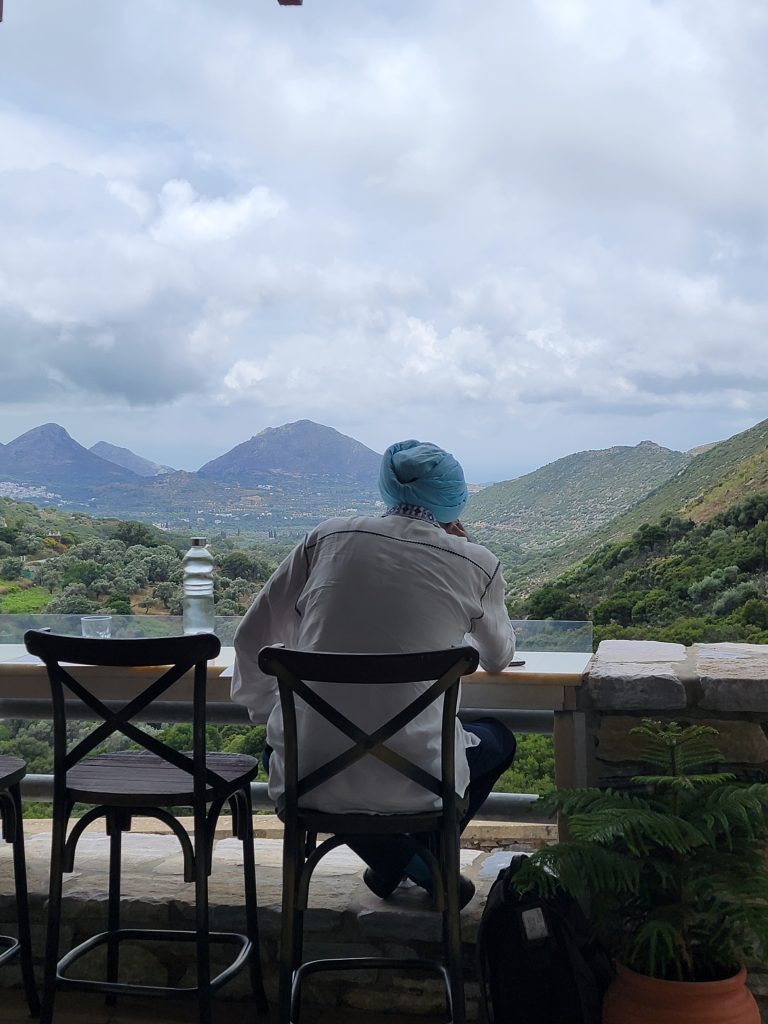
Cultural Layer: How Locals Talk About It
In Greece, dusty drizzle or sometimes full muddy rainfall, isn’t just weather—it’s a familiar ritual, part of everyday life. In village squares, cafés, and family kitchens, it always finds its way into the conversation.
“Μην πλύνεις το αυτοκίνητο, θα βρέξει λάσπη πάλι…”
“Don’t wash the car—mud rain is coming again…”
A knowing glance toward the ochre sky says it all.
Older generations recall it from decades past, though many now remark how the frequency has changed—how the air feels heavier, how the dust arrives more often. Climate patterns are shifting, they say, and even the sky feels different.
But in true Greek fashion, it’s met not with panic—but with a shrug, a smirk, and a resigned sense of humor. Nature is a force to live with, not fight.
Especially in the Cyclades, people don’t resist the elements—they coexist with them.

The Aftermath: When the North Winds Come
Just as suddenly as it began, the wind shifts.
The north wind—known locally as τραμουντάνα—arrives like a crisp breath from the mountains. It sweeps through the sky, stripping it clean, and clears the air with decisive grace. The haze lifts. The sea begins to sparkle, as if rinsed anew. And the Cyclades return to their true postcard colors—bright blue, sun-washed white, sea-glass green.
It’s a powerful shift. A natural cleansing.
A reminder that here, weather isn’t something you merely check on your phone—it’s something you feel on your skin, live through, and learn to interpret.
For those of us close to nature—where terraces are open, windows wide, and life flows between indoors and out—mud rain is more than a passing curiosity. It’s proof of our connection to a wider world. A wind from Africa can alter the landscape of a Greek island. The earth itself can fall from the sky.

Earth’s Long Memory
In many ways, dusty drizzle or mud rain is the earth remembering itself.
A desert thousands of kilometers away sends its breath to us, crossing borders with ease. The rain doesn’t just fall—it brings stories of another land. Stories of dunes, of silence, of wind-carved time. The sky becomes a messenger, and the ground, its canvas.
It reminds us that we are not separate from distant places. That even on this island, surrounded by sea, we are connected by air to everything else.
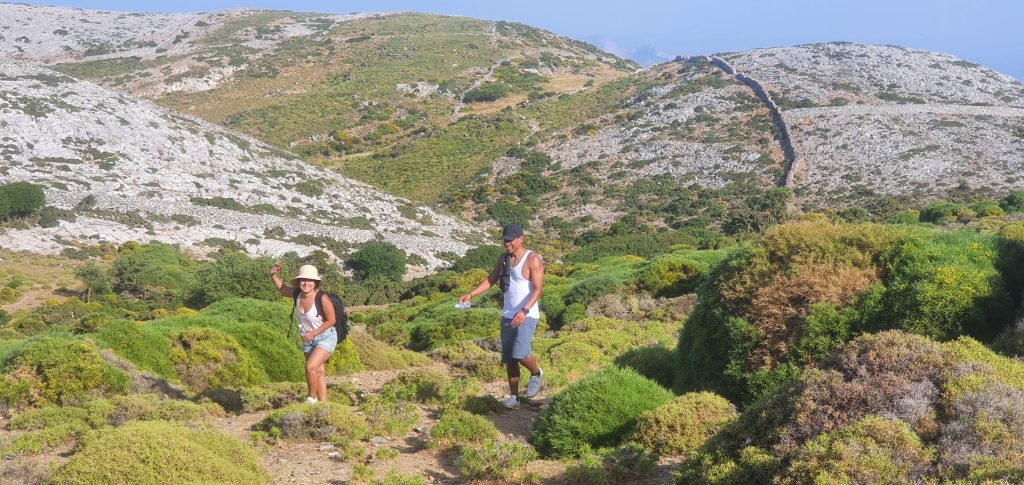
A Practical Note for Visitors
Tip from the Locals:
If you’re visiting and the sky turns golden and hazy, wait. That’s not a good time to clean the car or scrub your balcony. Let the rain come, let it pass, and wait for the north winds to sweep through. That’s the moment to bring out the mop—or better yet, go for a long walk. The air after mud rain is crisp, mineral-rich, and full of silence. It’s the kind of clean that goes deeper than the surface.
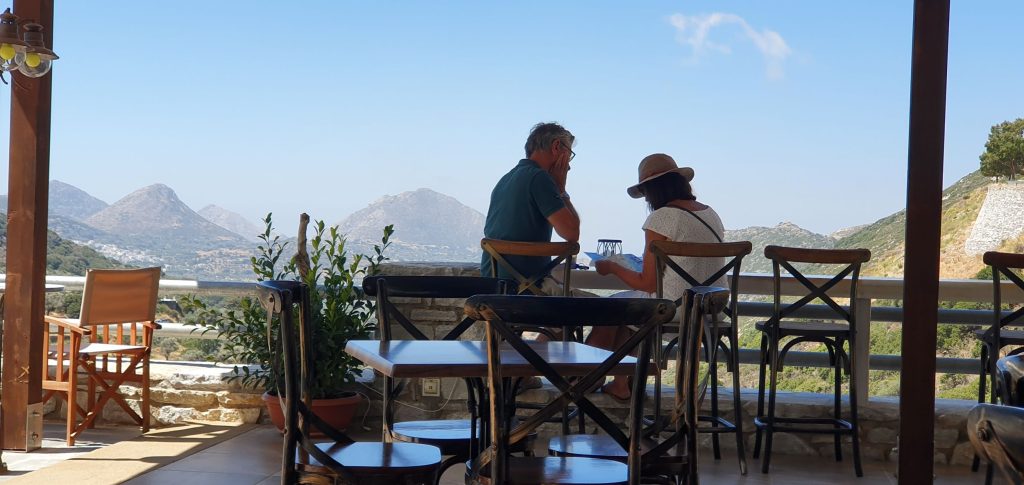
🌪️ What Happens in the Sahara:
In the Sahara, what they experience is dry dust storms—called haboobs or sandstorms. These are powerful winds that lift fine desert dust high into the atmosphere. There’s very little rainfall in the Sahara, so the dust rises and travels, often thousands of kilometers across continents and seas.
🌧️ What Happens in Greece and Europe:
When that dust-laden air reaches countries like Greece, Spain, or Italy, and it meets local rain clouds, the water in the atmosphere captures the fine Saharan dust.
When it rains, this combination falls as “mud rain” or “dirty dusty drizzle”—staining cars, coating plants, covering soil, and affecting people, animals, and nature.
So in short:
It’s a meeting of two worlds—one dry, one wet—but not always in harmony.
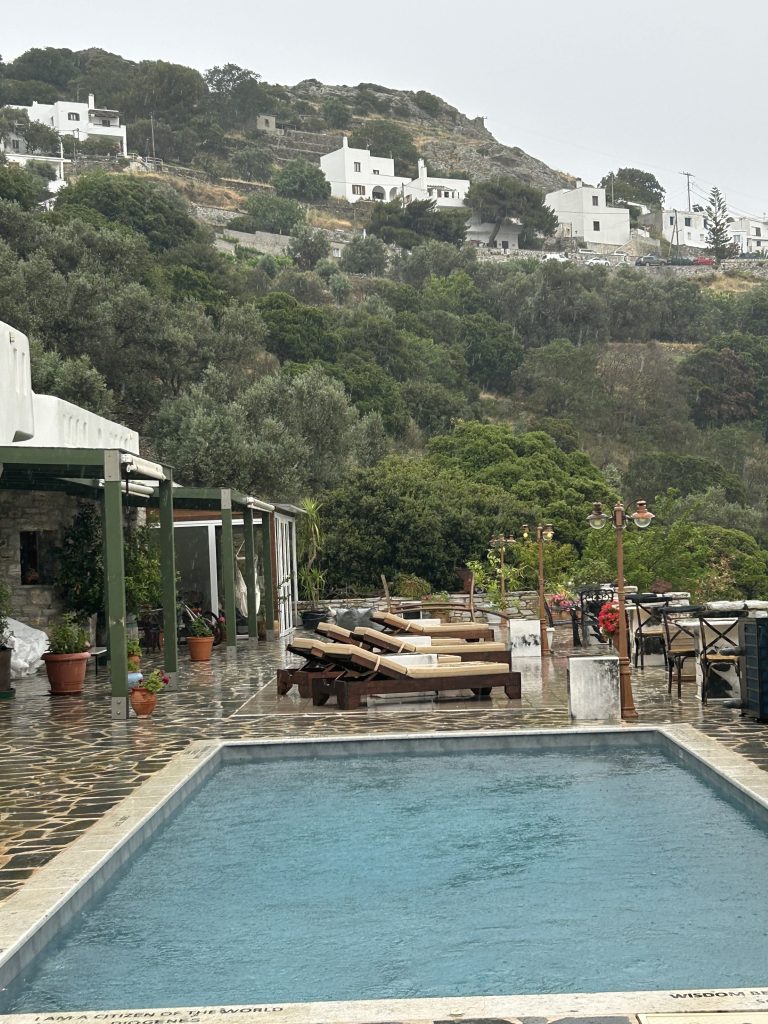
Reflections – A Different Kind of Clean
At ELaiolithos, perched high above the heart of Naxos, we’ve learned to live with the rhythm of the skies.
When the Sahara visits, we don’t retreat—we watch. The dust is a kind of guest, arriving unannounced, leaving behind a trace of its long journey.
Our views may blur for a moment, but they always return, sharper somehow.
Our walls may streak, but they wear each mark like a memory.
So if you’re staying with us and the sky turns unfamiliar, don’t rush to judge it. Let it unfold. Let the rain come. Let the dust speak in its quiet way.
Even our flowers, herbs and fruit trees seem to lean into it—gently coated in the mineral whisper of another land.
The olive trees below shimmer in the aftermath. The stones glisten again. The terrace breathes in the change, ready for what’s next.
Pause. Take it in.
Wait for the wind.
For the hush before the rain.
For the earth in the sky to settle once more.
Because here, even the weather carries a story.
One that begins in the desert and ends in the stillness of the Cyclades.
And when you’re here, you’re part of that story too.
P.S. Article authored by ELeni Marakis, founder of ELaiolithos — sharing Naxos, one story at a time.







